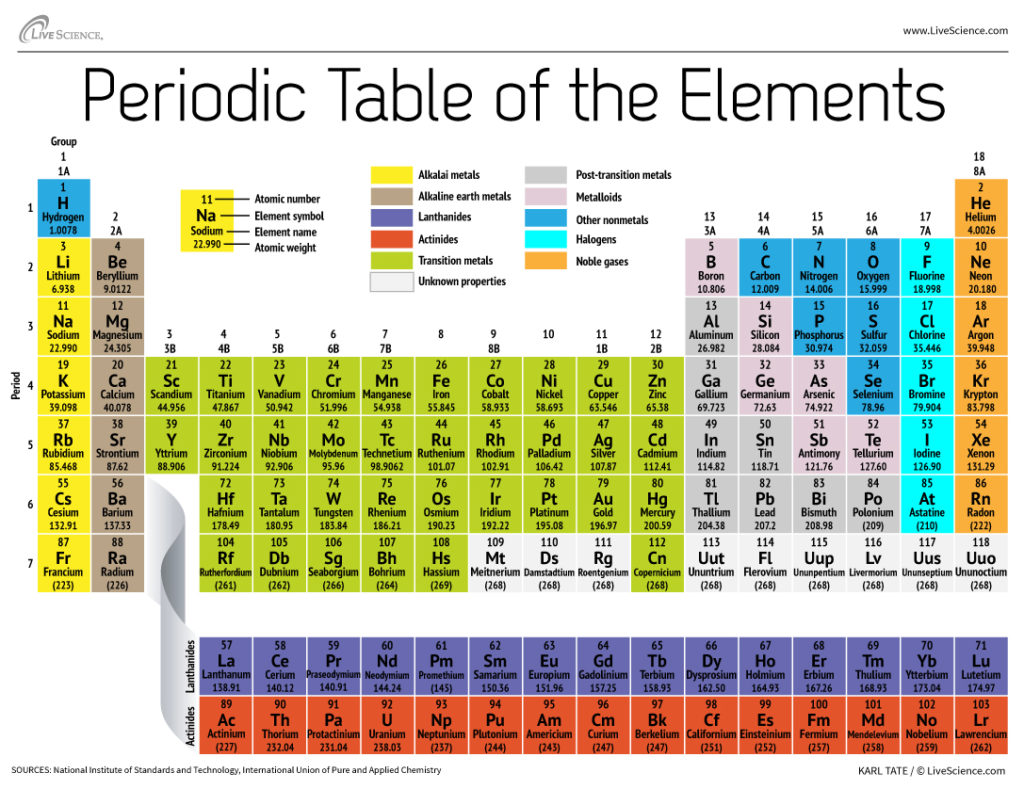“The periodic table,” begins Theodore Gray’s wonderful book The Elements, “is the universal catalog of everything you can drop on your foot.” It’s also been called “nature’s Rosetta Stone” and “the most recognizable icon in science” It’s also cool. See below for books, games, projects, the world’s best chemistry song, and the Periodic Table of Comic Books.
Table of Contents
THE BASICS
| Also see Chemistry. | |
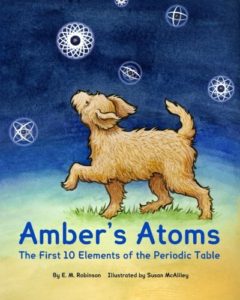 |
By E.M. Robinson, Amber’s Atoms (Design Friendly Press, 2016) is an introduction to the first ten elements of the Periodic Table. With a puppy. For ages 6-9. |
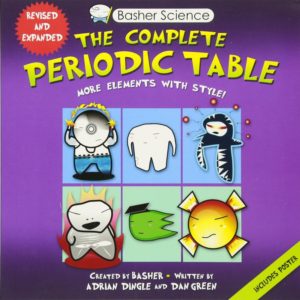 |
By Simon Basher and Adrian Dingle, The Complete Periodic Table: All the Elements with Style! (Kingfisher, 2015) is a clever tour of the elements in 128 creatively illustrated pages. Each, in the first person, tells a bit about itself. (“COBALT’s the name: Mysterious and attractive, I am the gremlin of the underworld.”) For ages 9 and up. |
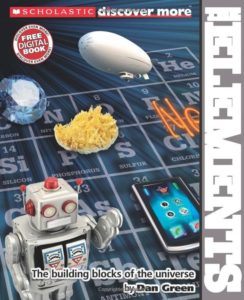 |
Dan Green’s 100+-page The Elements (Scholastic, 2012) is a real eye-catcher, filled with information, startling factoids (find out how many atoms are in the period at the end of a sentence), fantastic color photographs, and great graphics. And there’s more: the book comes with a code that can be used to download a companion digital book. For ages 10 and up. |
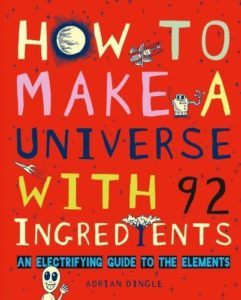
|
Adrian Dingle’s How to Make a Universe with 92 Ingredients (Owlkids, 2013) is a guide to the Periodic Table and the elements, with many examples of how these appear in daily life, in human beings, ocean water, fast food, fireworks, and computers. For ages 10-14. |
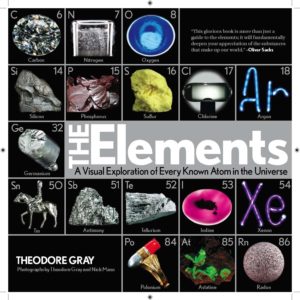 |
Theodore Gray’s The Elements (Black Dog & Leventhal, 2009) is a spectacularly illustrated “Visual Exploration of Every Known Atom in the Universe.” A gem of a book for all ages. See Theodore Gray’s spectacular Periodic Table website. (Click on an element for more images and information.) |
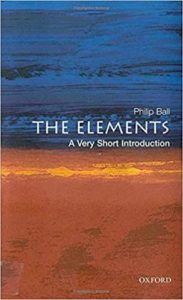 |
In the Very Short Introduction series from Oxford University Press, Philip Ball’s The Elements (2004) and Eric Scerri’s The Periodic Table (2012) are short (150-200 pages long) as well as historical, scientific, reader-friendly, and entertaining. For teenagers and adults. |
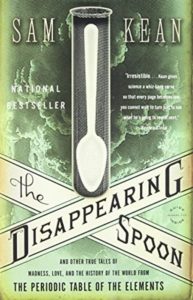 |
Sam Kean’s The Disappearing Spoon (Back Bay Books, 2011) is a fascinating account of the elements of the Periodic Table and the chemists who discovered and studied them, crammed with addictive anecdotes. (The disappearing spoon is made of gallium which looks like aluminum but melts at body temperature; gallium spoons at tea parties disappear when dunked in tea.) For teenagers and adults. Also see the Young Readers edition of the book (2018), for ages 9 and up. |
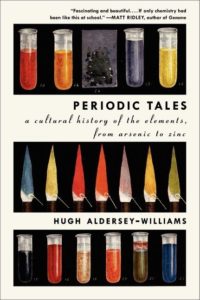 |
By Hugh Aldersey-Williams, Periodic Tales (Ecco, 2012) – subtitled “A Cultural History of the Elements from Arsenic to Zinc” – is a chatty and interesting account. On the topic of gold, for example, the author discusses a solid-gold statue of model Kate Moss, King Croesus’s gold coins, the search for El Dorado, gold rushes, and attempts to extract gold from seawater. For teenagers and adults. |
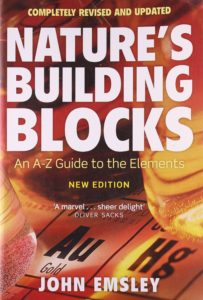 |
By John Emsley, Nature’s Building Blocks: An A-Z Guide to the Elements (Oxford University Press, 2011) is not only a superb resource book, but a delightful read. For each element, covered in alphabetical order, there are sections on its aspects as a Human Element (what does it do in the human body?), Medical Element, Food Element, Historical Element, Element of War, Economic Element, Environmental Element, and Element of Surprise. Thoroughly fascinating, all 500+ pages of it. |
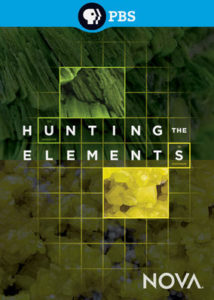 |
From PBS’s NOVA, Hunting the Elements is a two-hour special on the elements, rare, common, deadly, and weird. Click on Education and Outreach Resources at the site for a printable periodic table, video clips, interactive activities, and lesson plans to accompany the program. |
| From Chemical & Engineering News, at It’s Elemental: The Periodic Table, click on an element for an illustrated informative essay. | |
| The Periodic Table, says Discover magazine, is a giant cheat sheet. Find out why and more at 20 Things You Didn’t Know About the Periodic Table. |
